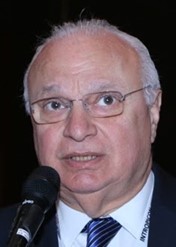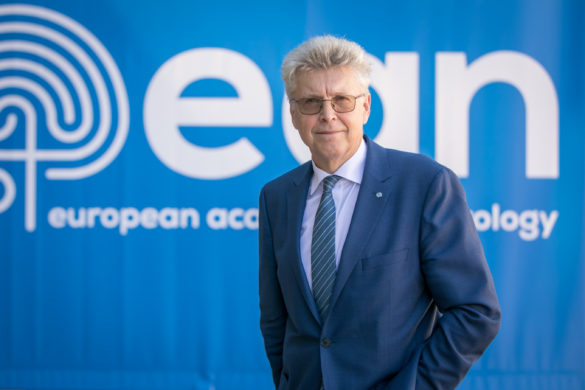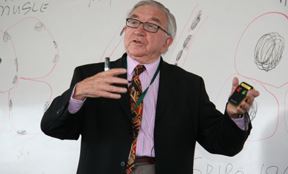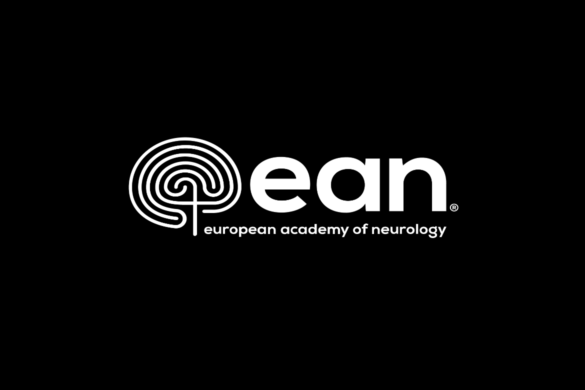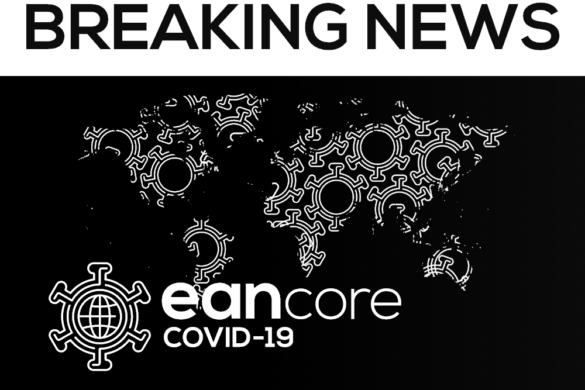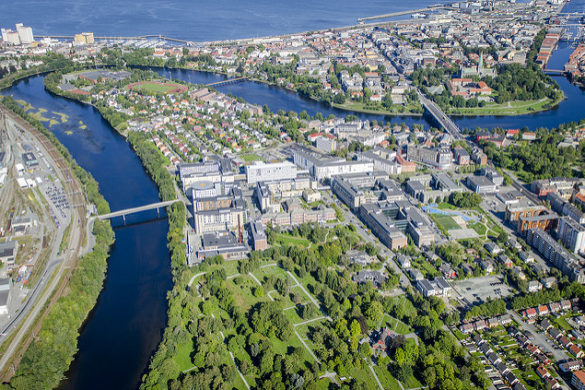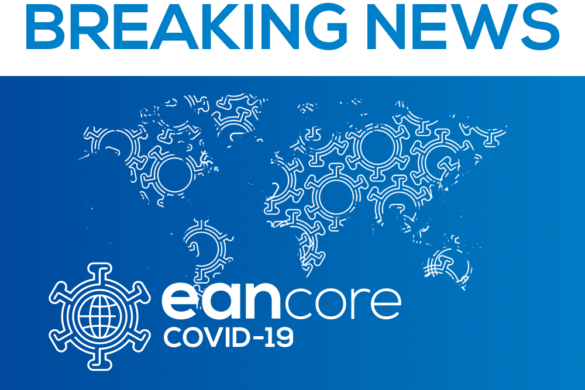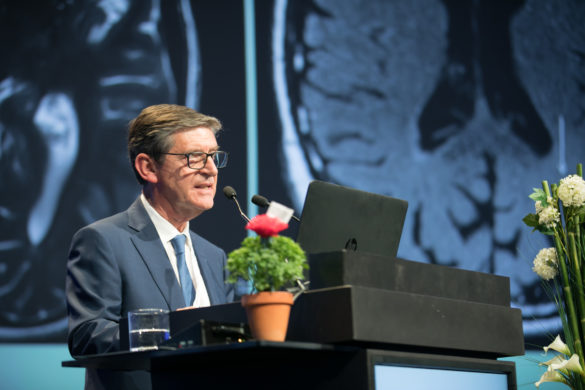Dear Prof. Shakir,
Thank you for accepting this interview.
On behalf also of EAN, I congratulate you on receiving this highly prestigious decoration from the British Government.
Interview:
1. What was your path towards becoming a prominent neurologist?
It is a process, which starts very early in one’s career. If you take me as an example, I finished my Neurology training in 1979 in the Institute of Neurological Sciences in Glasgow. My first oral presentation was a paper in the Scottish Neurological Association in Dundee, I then presented my first international paper in the ILAE meeting in Florence 1979. This exposure allowed me to meet many neurologists in the field of epilepsy, which made it possible to interact and make an impression in the field. The next major meeting was the World Congress of Neurology Kyoto 1981. This was my first trip to Japan and the experience was invaluable in having your name known outside your own institution and country. I then joined the Tropical Neurology Research Group of the WFN, which was led by Dr Noshir Wadia from India. I progressed from there to become the Secretary of the TNRG in 1985 during the WFN congress in Hamburg. At that time I was working as the Academic Dean of the newly established medical school in Kuwait and was the official delegate to the WFN council. My international career continued and my interest in Tropical Neurology progressed which culminated in publications in the field, the most quoted paper was on Brucellosis published in Brain 1987.
To answer the question, it is a combination of exposure, ability to make friends from various backgrounds and interests, to be available to help, advise and participate, to show interest in the work of others, and to support those who need help especially from less advanced parts of the world. Perhaps the most important issue for me is that I always remember my origins from a war torn country in the Middle East, and my willingness to help fellow neurologists of similar ages who may not have had the privileges I was lucky to have had when I moved to the UK.
My participation in international committees through the WFN during the successive World Congresses in New Delhi, 1989, Vancouver, 1993 and Buenos Aires 1997 made me much more confident and knowledgeable in neurological affairs having been a member of several committees. I was able to ‘influence’ decision making to a more global slant of direction. This culminated in the 2001 WFN London were I chaired the local organizing committee.
In 2006 I took over as Secretary- Treasurer General of the WFN and was re-elected for a second 4 year term. I was elected as President of the WFN during the Vienna WCN 2013.
Early in my career I learned from remarkable ability of Lord Walton who was past president of the WFN, who possessed a phenomenal memory of remembering names, and in many instances personal details of neurologists from across the world. I have always tried to emulate this gift and make personal friends with as many fellow neurologists as I can.
2. Neurological diseases are known to be among the most important causes of human suffering and death. How come this field is relatively neglected by society/politicians?
The statement above is fact. I learned this during my work with the WHO, which started in 2009. Prof Johan Aarli nominated me as chair of the Neurosciences Topic Advisory Group and I chaired the group for 9 years. It became obvious to all members that Neurology had been submerged within mental health as a very ‘minor’ section. This was compounded by the fact the cardiovascular diseases had taken over the main neurological condition, which is Stroke in all its guises. This dual camouflage resulted in neurodegenerative diseases i.e. the dementias were taken over as mental health issues and strokes as cardiovascular issues. This left Neurology with little to show for itself. Since 1955 the WHO had classified cerebrovascular diseases as s disease of blood vessels and the mortality/morbidity were counted as vascular diseases similar to any vessel disease! This was a disastrous situation, as Ministries of health did not see Neurology as a stand-alone specialty worthy of a budget for training and support. This position was so entrenched in the WHO hierarchy that in the past some Neurology leaders threated to cut all ties with the WHO if this was not rectified. Unfortunately this did not work, as the power of the Mental Health division and its dominance in the WHO affairs and management have always prevailed. The new ICD11 classification of diseases for the first time lists all Strokes under chapter 8 as a disease of the nervous system. It maybe obvious for readers to wonder how did this simple fact of stroke being a brain disease escape the WHO? The answer is simple and lies at the heart of the WHO structure of apportioning responsibilities into silos rather than reassessing facts as they stand.
The dementias are still a ‘shared’ group of diseases between chapters 6 mental health and chapter 8 Neurology. However, a compromise was reached in that “dementia’ remains under the mental health rubric while the causes of dementia such as Alzheimer’s etc. are under diseases of the nervous system. This is not ideal but will need another huge effort in years to come.
In spite of ten years work at the WHO; Neurology and Neurosurgery remain under the division of Mental Health and Substance abuse. The mission of the department is “To reduce the burden associated with mental, neurological and substance use disorders, and to promote mental health worldwide”. However, there is now a unit for Neurology and Neurosciences at the division of mental health.
Trying to answer the question is difficult but unless there are separate statistics and reports on Neurological disorders which started to trickle in the last 10 years, the matter of societal and political recognition will take years to mature.
3. Given your international experience on coordinating important organizations, how do you see EAN and WFN working together in the future?
The EAN has done remarkably well since the amalgamation of the EFNS and ENS. European Neurologists have demonstrated maturity, compromise and huge sensibility in bringing neurologists together. This has resonated not only in Europe but also globally. Although the union has required the diplomatic skills of Metternich and the intrigue of Machiavelli, the end product is solid organization, which is universally respected. Its ability to attract a diverse membership and provide educational products which have an international flavor has led many European and International neurologists to be attracted to its meetings and publications. There are six regional organizations across the world, two are more neurologically and scientifically advanced than the others. One of the two is the American Academy of Neurology, which is huge in numbers and resources; however, it has a major role of being a kind of ‘trade union’ for neurologists in the US. While the EAN has excellent relations with the political governmental authorities in Europe, it does not have the same role as the AAN. The EAN has made huge strides in a few years, it will only move ahead further in the coming years.
4. How do you see the European neurology developing during these difficult times?
One has to look at the history of the various components of the EAN. Nearly all major advances in Neurology have been made in various European countries. The other crucial fact is that the EAN does not place any hindrance on the evolution of national neurological associations within its domain. This is crucial, as these societies have produced the most important innovations in our field over the past three centuries. Harnessing such progress and being the international forum for their presentation is the goal driving the EAN. Europe has been in difficult times over its long history and the current status will disappear leaving us ready and able to forge ahead in renewed vigor and purpose.
5. How do you see EAN’s role on international level in the following years?
The EAN has many roles within Europe. The excellent work to level the playing field within European Neurology is the priority. The training, scientific achievements, research facilities and funding are the issues that deserve particular amount of attention. In my opinion, the EAN plays a crucial role in exposing the diversity of neurological care and training in various parts of Europe. This is achieved by attracting young newly qualified doctors to Neurology and producing attractive training manuals which can be taken over by training programs in Europe are which are well underway. The establishment of unified post-graduate standards are well established and progressing annually. The way to win international recognition is to extend the training standards to international graduates so that the ‘European” model is followed globally. There is an understandable concern that one size may not fit all and various national training programs may want the EAN standard as the icing on the cake but not the core curriculum in national degrees. This desire has to be respected and can only enrich the diversity of the EAN. The EAN has in few years reached levels of attainment, which otherwise may have required decades to achieve.

